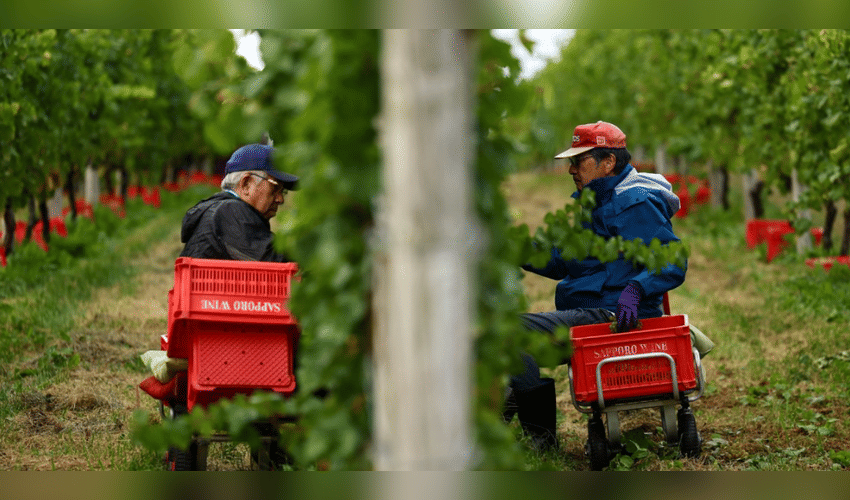Asia In News
A Japanese Pinot Noir town, once helped by climate change, now fears the weather.

Climate change has turned the small Japanese town of Yoichi into a rising star for Pinot Noir enthusiasts, as gradually warming temperatures over the past 20 years encouraged locals to cultivate the delicate grape. Historically known as the home of Nikka Whisky, Yoichi gained international attention in 2017 when Domaine Takahiko’s Nana-Tsu-Mori Pinot Noir was featured at Copenhagen’s acclaimed Noma restaurant. A bottle that once sold for around US$30 now fetches roughly US$560 in Japan, and the town—on Hokkaido, Japan’s northernmost island—now boasts about 20 wineries and 70 vineyards, with several wines receiving accolades.
Yet Yoichi’s winegrowers are increasingly anxious. Rapid temperature increases and potential rain during harvest threaten the viability of Pinot Noir. “It’s like a roller coaster,” said Takahiko Soga, who founded Domaine Takahiko in 2010. Temperatures that once resembled France’s Alsace region have climbed toward Burgundy levels, and in some years, even approached Loire or Bordeaux temperatures, he noted.
Pinot Noir, prized for its elegant, translucent wines, thrives in cool to temperate climates but is highly sensitive to excessive sun or rain due to its thin skin and tight clusters. Wine-growing regions are classified using the Winkler Index, which calculates growing degree days (GDD) above 10°C from April to October. Historically, Hokkaido was Region I (coolest), but Yoichi’s GDD has recently reached Region II, suitable for medium-bodied reds like Merlot or Cabernet Sauvignon.
This year, Yoichi experienced its hottest summer on record, averaging 22.1°C between June and August—about three degrees higher than the 30-year average up to 2020. The warmer, longer summers risk overly rapid ripening of Pinot Noir, creating high sugar and low acid levels, and increase susceptibility to rain damage. Award-winning vineyard owner Yuichi Hirotsu reported this year’s harvest suffered from rain damage, particularly affecting both Pinot Noir and his Austrian Zweigeltrebe, which required painstaking handpicking of damaged grapes. Climate change has also brought more birds to the vineyards, likely due to reduced natural food in nearby mountains, forcing farmers to rely on firecrackers to protect their crops.
To tackle these challenges, Yoichi Mayor Keisuke Saito established a “wine accord” with Burgundy’s Gevrey-Chambertin, enabling the towns to share expertise on viticulture and climate adaptation. In the short term, Domaine Takahiko has built an underground cellar to store 100 barrels and control temperature and humidity. Looking ahead, farmers anticipate experimenting with other grape varieties such as Merlot or Syrah, acknowledging that Pinot Noir may not remain the town’s primary focus.



